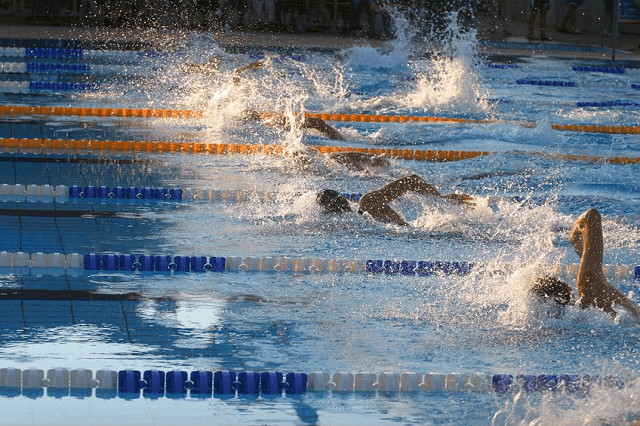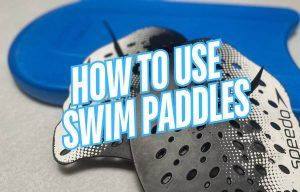Swimming is a lot like driving, cycling, or walking, in that there are accepted norms for how we share the space we use. In general, the rules outlined can be lumped under the notion of swimming conscientiously of others in the hope that your fellow swimmers will do the same for you.
Here are 10 rules swimmers should be aware of when sharing a lane with a fellow paddler:
1. Don’t push off right before a swimmer comes in to turn.
This is one of those behaviors that some swimmers – regardless of age or experience – simply never grow out of. Pushing off right when another swimmer is coming in to turn means that this swimmer will push off either, a) right beside you, or b) on top or below you.
2. Cross the T to turn.
When going into the wall cross into the center of the lane and turn at the middle of the lane so that you have less distance to travel to get to the other side of the lane. In a busy pool odds are good that another swimmer will be hot on your heels, so turning in the center to the wall insures that you don’t push off into incoming swimmers.
3. Take the empty lane first.
If there is an empty lane, take it! Simple as that.
4. Give other swimmers space.
Unless the pool is completely brimming with swimmers – as is typical at a meet with one pool and 1,500+ swimmers – give the other swimmers in your lane a generous amount of space. As with pushing off right before someone turns, don’t swim on the heels of other swimmers.
5. Check for the direction of the circle before jumping in.
I cannot count how many times swimmers have jumped in and started swimming against the posted circle directions. It causes log jams and confusion when people swim against the flow of traffic.
6. Don’t split the lane unless agreed to.
If there are two swimmers in a lane often times they will split it, with one swimmer taking a side. This is something that should be decided between the two swimmers – don’t jump in and assume the other swimmer will automatically understand what you mean to do.
Similarly, when you are the third swimmer to the lane, do the courteous thing and wait at the end of the lane until both swimmers see you and revert back to circle swimming.
7. Rest in the corners.
Between reps and sets it’s normal to want to catch your breath, and reset yourself mentally for the next round of swimming. Rest in the corners of the lane, as close to the wall or lane rope as possible so that other swimmers can turn unobstructed. If you decide to chill out in the middle of the lane don’t be surprised if you get flip-turned on.
8. Choose a lane according to your speed, not your ego.
Yes, we all want to think that we are the fastest swimmer in the pool. This, sadly, isn’t always the case. Choose a lane that matches up with how quickly (or slowly) you are planning on swimming. In other words, the lane in which the swimmers are the least likely to impede your swimming, and vice versa.
9. Tap and pass.
When moving past slower moving swimmers in your lane, tap them once on the foot and speed up to pass them. If you are about to be passed, do not speed up. Stay to the side and allow the faster moving swimmer to cruise past you. Passing down the middle of the lane when it is busy is dangerous and runs the risk of head-on collisions, so make the transaction as smooth as possible whether you are passing or being passed.
10. Bring your own stuff.
This seems like an obvious one, but bring your own swim equipment to the lane. Using the gear that belongs to other swimmers is not only bad etiquette in the pool, but a bad policy to have in life. The pull-buoys or hand paddles that other swimmers have will be adjusted to fit them specifically, so bring your own equipment.
More Stuff Like This
How to Start Swimming. Swimming is one of the best ways to get in shape. Here is what you need to know about how to start swimming for exercise.
Laps vs. Lengths in Swimming — Are they the same? Curious whether laps and lengths are the same in swimming? Here’s a deep dive into how they are essentially the same thing with some key differences.















